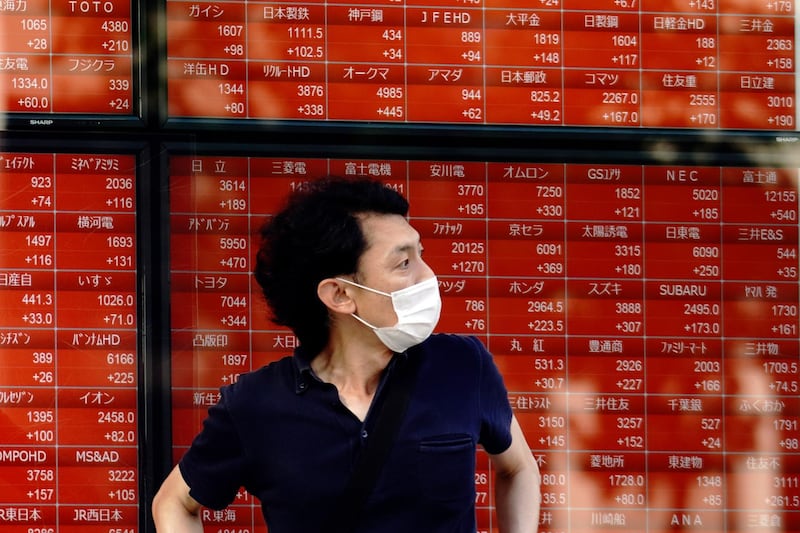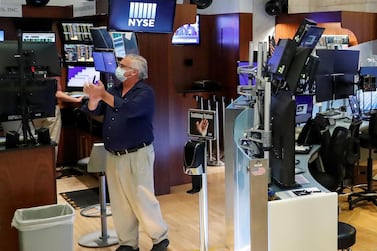Over the past two weeks, the Dow Jones rallied to 27589, which meant the entire coronavirus sell-off was recovered in early June. Markets were boosted by the US Federal Reserve and the trillions injected by the central bank to prop up financial markets.
The combination of fiscal and monetary policy has rallied risk appetite and seen equities move higher. In the past week, US President Donald Trump teased that the federal government was considering a fresh $1 trillion (Dh3.67tn) fiscal injection towards infrastructure spending, primarily towards bridges, roads and broadband. The news was followed by the Fed unveiling a comprehensive plan to start buying individual corporate bonds this week, further underscoring its role as a backstop to financial markets.
Markets immediately rallied with the US dollar selling off and equities and higher yielding assets moving upwards. The move follows a week of lower closings as a second wave of coronavirus cases riled risk sentiment but the latest announcements will no doubt overshadow these recent concerns and pare losses seen in the middle of the month. The recent pricing action, however, illustrates how sensitive markets remain and how they will continue to trade in a choppy manner through the summer months. The trend is clear in my mind: while the coronavirus is going nowhere, the recent surge in new cases, particularly in the US, highlights that the scenario we've seen since March has not really changed. But the curious nature of the markets, which seem to forget the virus and focus on new easing measures, has seen a 100 per cent recovery from the Covid-19 sell-off.
On the back of the recent easing measures, expect markets to continue their upward moves in trading this week with a correction coming next week. However, be wary of building longer term positions as I feel we are not fully out of the woods. Yes, we saw the bottom in US equities when they hit those lows at 18000 levels in March, however, I still expect a correction in the Dow Jones 30 – a stock index made up of 30 large, publicly-traded US companies – which would see it sub 23000. At this point I would be comfortable building long positions with a six-month holding view.
In the currency segment, after a sparkling rally in both the euro and British pound, to $1.14 and $1.28 levels against the US dollar respectively, I expect more range bound trading action with a slight bullish bias. In the short term, expect the new fiscal and monetary measures to continue having a drag on US dollar forecasts which should see EUR/USD and GBP/USD pairings trade higher in the near term. I don’t foresee a break of $1.15, which represents a strong resistance level in EUR/USD, and still maintain a bearish view in the medium term in both currency pairs.
The US Dollar Index, a measure of the value of the dollar against a weighted basket of major currencies, slipped to three month lows at 95.70 levels in June as perceived optimism grew and risk appetite improved. I expect these 95.70 lows to hold but still maintain a sideways to slight negative bias in the greenback.
The key data releases to watch out for towards the end of this month include the Bank of England rate decision, due out this Thursday, which is expected to be unchanged with an increase in their current quantitative easing programme to £725 billion (Dh3.36bn). Comments from the press conference that will follow the announcement should see volatility returning into pound currency crosses. Thursday will also see the release of the US first quarter gross domestic product figures, which is expected to contract by 5 per cent. The UK will release its GDP reading on June 30 after posting a contraction of 2 per cent in the final quarter of 2019.
Along with these data releases, keep an eye and ear out for upcoming comments from Mr Trump and the Fed to guide the risk on moods currently taking markets higher.
Gaurav Kashyap is a market strategist at Equiti Global Markets. The views and opinions expressed in this article are those of the author and do not reflect the views of Equiti








